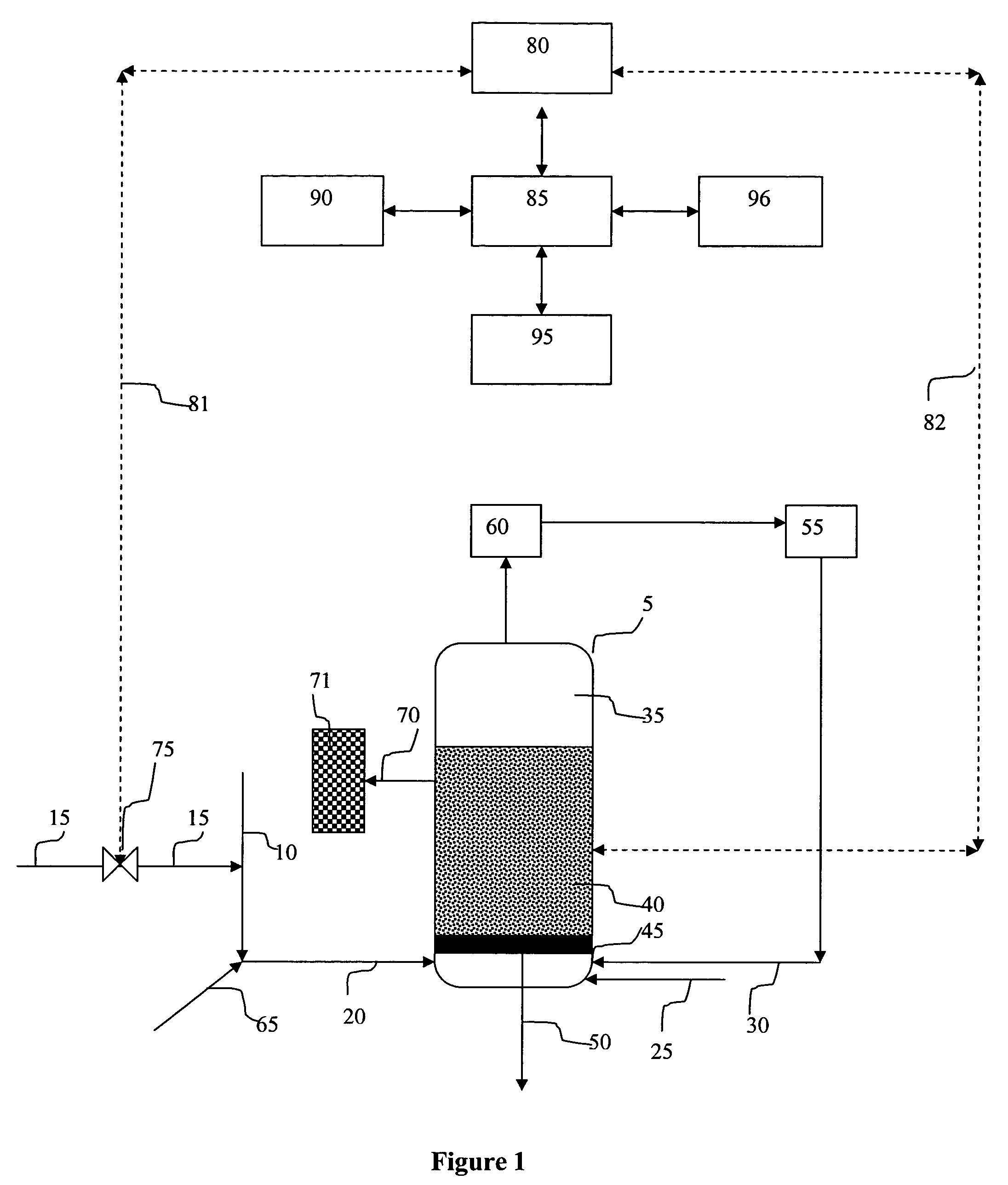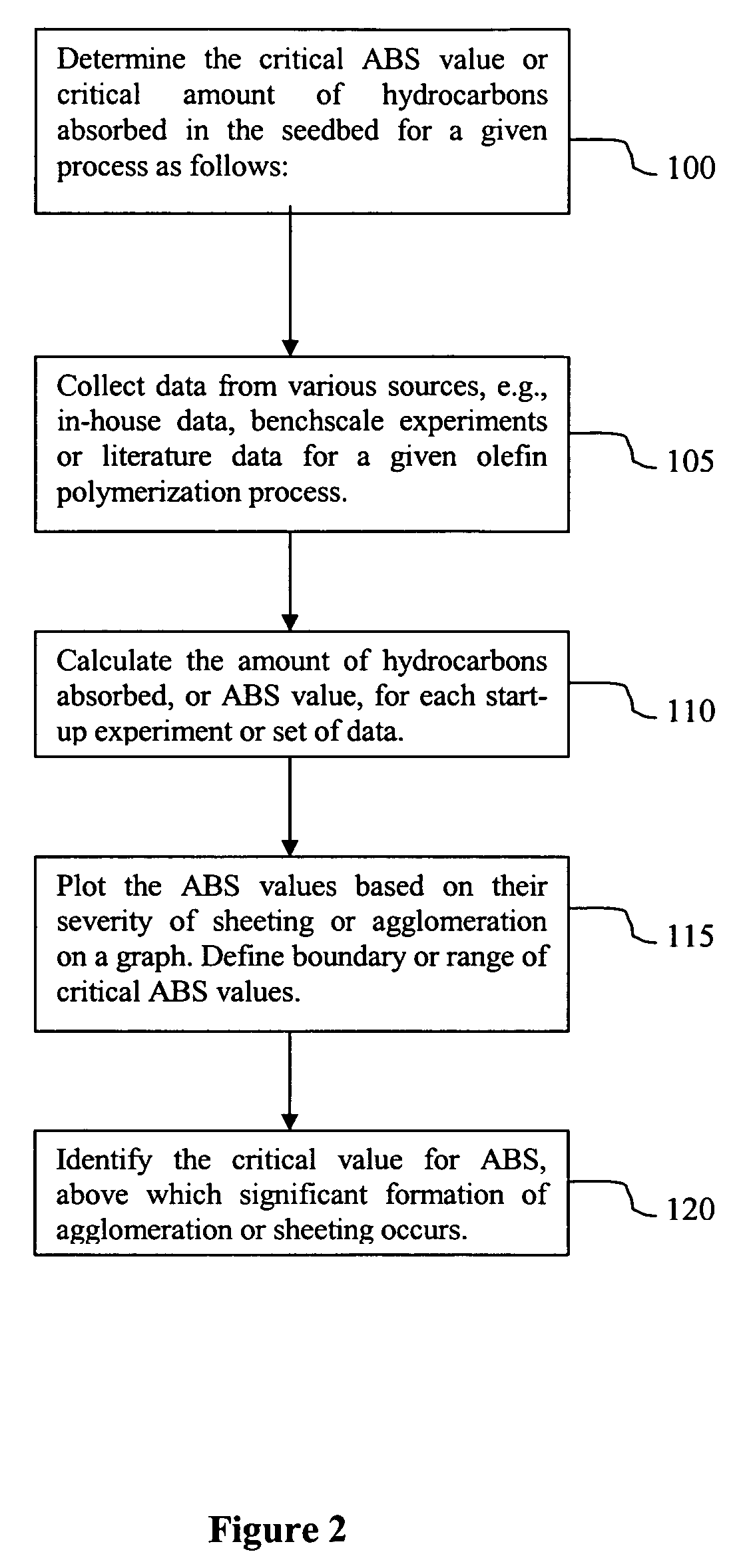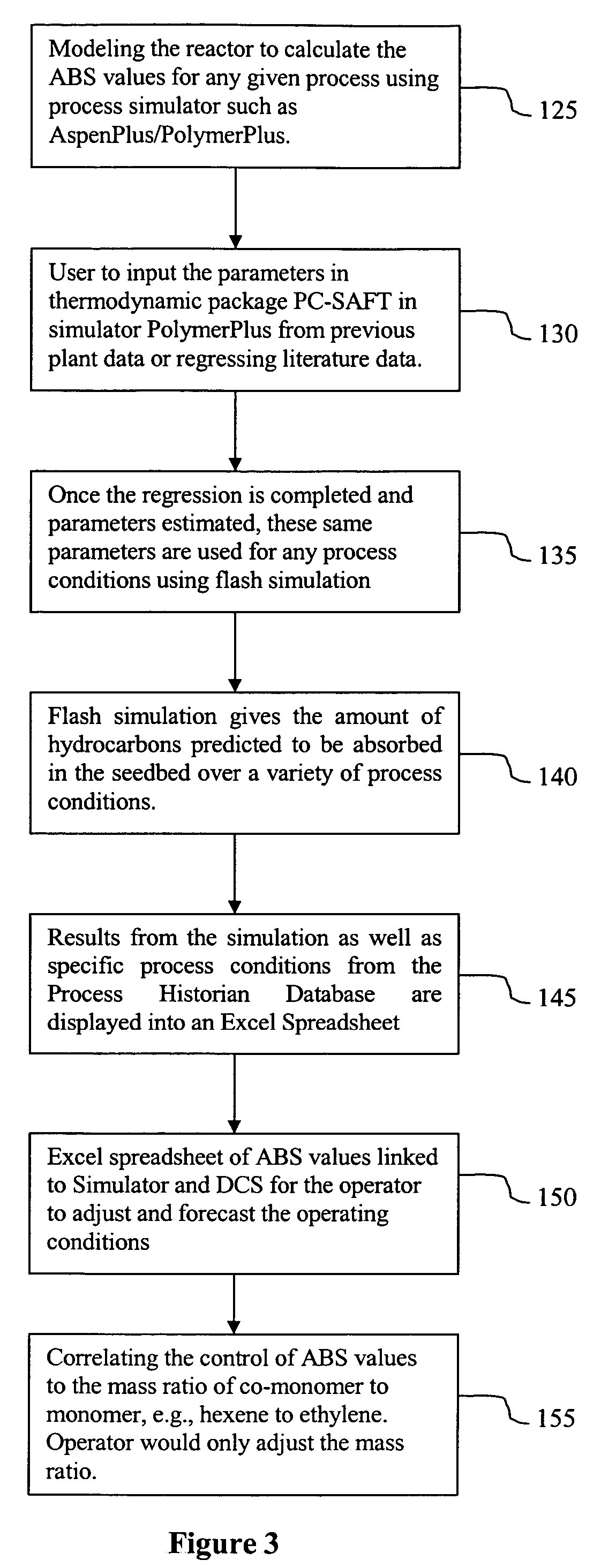Method for polymerizing olefins in a gas phase reactor using a seedbed during start-up
a gas phase reactor and seedbed technology, applied in the field of gas phase reactor polymerization olefins, can solve the problems of increased formation of agglomerates or sheeting on the reactor wall, lost production time to remove these substandard products, local hot spots and potential agglomeration and sheeting,
- Summary
- Abstract
- Description
- Claims
- Application Information
AI Technical Summary
Benefits of technology
Problems solved by technology
Method used
Image
Examples
Embodiment Construction
[0012]In a reaction zone, a monomer, and optionally a comonomer, and a catalyst are combined under polymerization conditions to produce a polyolefin for example a homopolymer or a copolymer when comonomer is present. The monomer and comonomer are olefins such as ethylene, propylene, butene-1, hexenes such as 4-methylpentene-1 or hexene-1, octene-1, decene-1 or combinations thereof. The polymerization process is carried out in a reactor system coupled with a control system, in an embodiment as shown in FIG. 1. The reactor system comprises a reactor 5 comprising a reaction zone, a feed gas stream 20, a catalyst 25, a grid plate 45, a seedbed 40, a recycle stream compressor 55, a recycle stream cooler 60 and associated piping. The control system comprises a distributed control system 80, a control valve system 75.and an operator 90.
[0013]For the purpose of this discussion, the olefin polymerization process will be discussed generally in terms of ethylene polymerization, preferably line...
PUM
| Property | Measurement | Unit |
|---|---|---|
| mass ratio | aaaaa | aaaaa |
| temperature | aaaaa | aaaaa |
| temperature | aaaaa | aaaaa |
Abstract
Description
Claims
Application Information
 Login to View More
Login to View More - R&D
- Intellectual Property
- Life Sciences
- Materials
- Tech Scout
- Unparalleled Data Quality
- Higher Quality Content
- 60% Fewer Hallucinations
Browse by: Latest US Patents, China's latest patents, Technical Efficacy Thesaurus, Application Domain, Technology Topic, Popular Technical Reports.
© 2025 PatSnap. All rights reserved.Legal|Privacy policy|Modern Slavery Act Transparency Statement|Sitemap|About US| Contact US: help@patsnap.com



